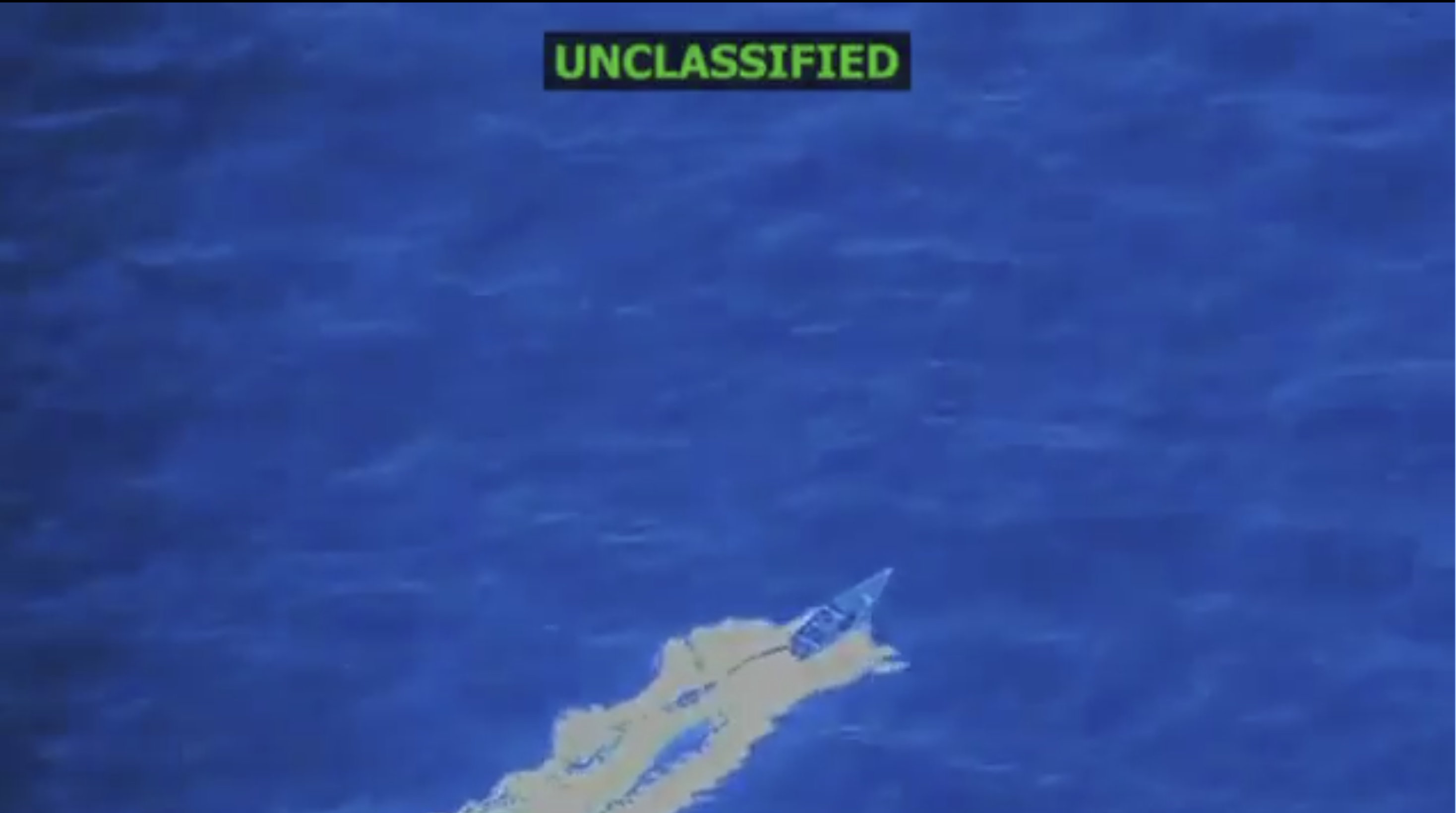The End of Active Hostilities Versus the End of Armed Conflict
 On Tuesday, Ben and Cody noted the apparent tension between President Obama's Memorial Day comments about the end of the war in Afghanistan and the Justice Department's arguments in the Al Warafi case.
On Tuesday, Ben and Cody noted the apparent tension between President Obama's Memorial Day comments about the end of the war in Afghanistan and the Justice Department's arguments in the Al Warafi case.
Published by The Lawfare Institute
in Cooperation With

 On Tuesday, Ben and Cody noted the apparent tension between President Obama's Memorial Day comments about the end of the war in Afghanistan and the Justice Department's arguments in the Al Warafi case. The following day, in a post over at Just Security on the “end of war” dispute in that case, Marty Lederman highlighted the crux of the debate between the US government and attorneys for Al Warafi on whether or not international law now requires his release.
Under international humanitarian law, what defines the point at which a detainee must go free? Is it the end of active hostilities? The end of the conflict? (And are those points the same or different?) Is it the word of the President? Facts on the ground? Or something else?
Attorneys for both the detainee and the Department of Justice are correct in their understanding of the law governing international armed conflict, which informs the interpretation of the detention authority under the 2001 AUMF. IHL requires release at the end of active hostilities (if not before) unless the person is being prosecuted or serving a sentence. The rationale is as follows: “[i]n time of war, the internment of captives is justified by a legitimate concern to prevent military personnel from taking up arms once more against the captor State. That reason no longer exists once the fighting is over.” (The same rationale applies in non-international armed conflict: “measures restricting people’s liberty, taken for reasons related to the conflict, should cease at the end of active hostilities.”).
Lawyers for Al Warafi argue that active hostilities have necessarily ceased if the war in Afghanistan is now over, as numerous Presidential statements claim. In response, the DoJ argues: “Although the United States has ended its combat mission in Afghanistan, the fighting there has not stopped. … the end of the combat mission does not mean the cessation of active hostilities.” In other words, the petitioner is arguing that hostilities have ended because the entire conflict has ended, while the DoJ appears to be saying active hostilities continue and only the specific offensive combat mission has ended.
In distinguishing between the end of active hostilities and the end of an armed conflict, Marty wrote:
On Tuesday, Ben and Cody noted the apparent tension between President Obama's Memorial Day comments about the end of the war in Afghanistan and the Justice Department's arguments in the Al Warafi case. The following day, in a post over at Just Security on the “end of war” dispute in that case, Marty Lederman highlighted the crux of the debate between the US government and attorneys for Al Warafi on whether or not international law now requires his release.
Under international humanitarian law, what defines the point at which a detainee must go free? Is it the end of active hostilities? The end of the conflict? (And are those points the same or different?) Is it the word of the President? Facts on the ground? Or something else?
Attorneys for both the detainee and the Department of Justice are correct in their understanding of the law governing international armed conflict, which informs the interpretation of the detention authority under the 2001 AUMF. IHL requires release at the end of active hostilities (if not before) unless the person is being prosecuted or serving a sentence. The rationale is as follows: “[i]n time of war, the internment of captives is justified by a legitimate concern to prevent military personnel from taking up arms once more against the captor State. That reason no longer exists once the fighting is over.” (The same rationale applies in non-international armed conflict: “measures restricting people’s liberty, taken for reasons related to the conflict, should cease at the end of active hostilities.”).
Lawyers for Al Warafi argue that active hostilities have necessarily ceased if the war in Afghanistan is now over, as numerous Presidential statements claim. In response, the DoJ argues: “Although the United States has ended its combat mission in Afghanistan, the fighting there has not stopped. … the end of the combat mission does not mean the cessation of active hostilities.” In other words, the petitioner is arguing that hostilities have ended because the entire conflict has ended, while the DoJ appears to be saying active hostilities continue and only the specific offensive combat mission has ended.
In distinguishing between the end of active hostilities and the end of an armed conflict, Marty wrote:
DOJ argues (see pp. 20-23 of its brief) that regardless of whether the armed conflict has ended as a matter of international law, lower-level hostilities nevertheless continue between the U.S. and the Taliban; and, under international law, such post-conflict hostilities are sufficient to justify continued military detention of enemy forces, in order to prevent them from returning to such hostilities. This argument relies upon analogy to Article 118 of the Third Geneva Convention, which provides that “[p]risoners of war shall be released and repatriated without delay after the cessation of active hostilities.”However, Article 118 of the Third Geneva Convention (GC III) is not referring to lower level post-conflict hostilities, but rather to in-conflict active hostilities. As I argued last month, the concept of “active hostilities” is actually narrower than “armed conflict,” and an international armed conflict can remain even when active hostilities have ceased:
Indeed, comparing Article 6 of the GC IV on the beginning and end of the Convention’s application to Article 133 of the GC IV on the end of internment reveals a distinction between the “general close of military operations” (i.e., the end of armed conflict) and the “close of hostilities.” The Commentary to the AP I explains: “The general close of military operations may occur after the ‘cessation of active hostilities….’” In the Tadic jurisdiction decision, the International Criminal Tribunal for the Former Yugoslavia also wrote that IHL “applies from the initiation of such armed conflicts and extends beyond the cessation of hostilities….” In light of this, the above rules on release from internment will take effect even before the armed conflict has ended.Conversely, an international armed conflict cannot cease if there are ongoing hostilities (even low-level ones), because an international armed conflict is defined as “any difference arising between two States and leading to the intervention of armed forces. ... It makes no difference how long the conflict lasts, or how much slaughter takes place.” IHL does not permit non-criminal detention to continue past the armed conflict. Instead, it can require release before the end of an armed conflict, and at the very latest when active hostilities have ceased. Consistent with this understanding, Derek Jinks has written:
Recall that the “armed conflict” persists until the “general close of hostilities”---even though some obligations (such as the duty to repatriate POWs) are activated by the “cessation of active hostilities.” It is important to note that many commentators have suggested that the “general close of military operations” standard is distinct from the “cessation of active hostilities” standard. The latter refers to the termination of hostilities---the silencing of the guns---whereas the former refers to the complete cessation of all aggressive military maneuvers. On this reading, an “armed conflict” might persist beyond the “cessation of active hostilities.” And because the obligation to repatriate is triggered by the “cessation of active hostilities,” it necessarily follows that, in some circumstances, there might be a duty to repatriate before the “armed conflict” as such is terminated.Interestingly, the Commentary to Art. 2(2) AP II (applicable in non-international armed conflict) appears to conflate the end of active hostilities with the end of military operations altogether. This may be because, unlike an international armed conflict, the very existence of a non-international armed conflict requires a certain intensity of hostilities in the first place. Of course, persons who have yet to be released will continue to be protected by IHL until their final release and repatriation, even if this happens after the close of hostilities. The Commentary to Art. 5 GC III explains that “the prisoner must continue to be treated as such until such time as he is reinstated in the situation in which he was before being captured.” In a similar way, the Commentary to Article 6(2) GC IV explains that “in the period following the close of military operations conditions are still fairly unsettled and the passions roused by war are still aflame. Hence the necessity for clear rules safeguarding protected persons, most of whom are of course enemy nationals.” Similar protection is foreseen in non-international armed conflict. It is also important to point out that under IHL, "the close of hostilities" must “be taken to mean a state of fact rather than the legal situation covered by laws or decrees fixing the date of cessation of hostilities.” While political statements may ultimately reflect an assessment of the reality on the ground, focusing on the facts is precisely meant to prevent conflicting political statements of the type surfacing in Al Warafi from coloring IHL’s protective purpose. Nathalie Weizmann is an Associate Research Scholar and Senior Director of the Counterterrorism and Human Rights Project at Columbia Law School’s Human Rights Institute. For seven years she was a legal adviser with the International Committee of the Red Cross, both at Geneva headquarters and in the field.




